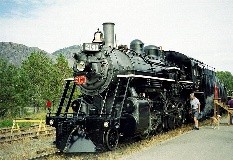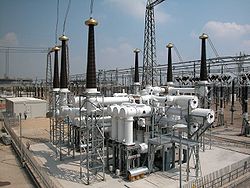CorrCAD is the latest addition to SES’ powerful software packages aimed at solving practical scientific and engineering problems realistically and accurately. CorrCAD has been developed to tackle a large variety of cathodic protection design tasks and related issues on land and offshore. CorrCAD main function is to determine the degree of corrosion control provided by a system. Typical application of CorrCAD for corrosion control includes impressed cathodic current protection systems (ICCP) and use of sacrificial anodes in anodic protection systems, where anodic current is impressed on corroding material to enforce passivation.
Another application of CorrCAD is to estimate the effect of stray currents such as those produced by HVDC electrodes or dc rail traction systems on the corrosion of buried metallic structures. It can evaluate the corrosion status of the structure and help optimize the location and characteristics of the corrosion protective system (such as ICCP) to minimize stray current interference effects on protected structures such as pipelines.


Technical Highlights
The CAD based graphical user interface offers a complete and simple solution for defining complex networks accurately, displaying and editing the protected structures and their protection systems, computing and examining the results. CorrCAD uses the MALZ or HIFREQ (future) computation module as the main engines to carry out the computations. Furthermore, a new computation module that accounts for the polarization electrochemical process based on polarization curves or equivalent polarization parameters was developed to carry out the required iterative process until convergence is achieved.
The CorrCAD computation modules consider polarization effects, i.e., the computation module does consider the polarization resistance. The stress voltage is the potential difference between the metal potential and soil potential at the reference point, and it does include the polarization potential. The potential drop across the coating and the soil potential drop to remote soil are both considered as IR drop that should be eliminated from the cathodic protection effectiveness evaluation. The real effectiveness measure of the CP or direct characterization of stray current interference level is the polarization potential. That being said, CorrCAD:
- Accounts for the polarization resistance in the computation;
- Provides the polarization potential that is the most significant value for corrosion evaluation effectiveness.
CorrCAD offers the possibility to determine the corrosion effectiveness considering experimental polarization data such as polarization curves. When there is a good coating on the pipe, CorrCAD computes the current density by using the provided coated steel polarization curve, then eliminates the effects of IR drop, so that the coating protection current density and corresponding over-potential are accurately obtained.
CorrCAD Capabilities
The CorrCAD software package capabilities are summarized as follows:
-
It accurately models large metallic ground networks in complex soil structures such as horizontally and vertically layered soils with, optionally, embedded finite volumes of soils having arbitrary resistivities without the need to use time-consuming finite element based solutions. Presently, although CorrCAD applies one soil model to the entire system, soil effect variations are accounted for by allowing arbitrary coating characteristics along the length of the modeled metallic structures.
-
It computes leakage currents, earth potentials and electric fields associated with a buried network of metallic conductors or structures and can be applied to a large range of frequencies, in addition to DC.
-
It accounts for the attenuation along conductors and determines potential drops from one part of a system to another as well as transfer voltages to other buried structures. This makes it possible to compute accurately potentials throughout the lengths of pipelines. The presence of lumped impedances (resistors, capacitors and inductances) can be taken into account as well.
-
It models coated pipes, each with different coating characteristics (i.e., coating resistivity, permittivity and thickness), if desired. Thus, buried pipes can be accurately represented.
-
Finally it accounts for the polarization electrochemical potential, which is the most significant indicator of the cathodic protection effectiveness and the adequacy of the mitigation methods deployed to minimize the effects of stray current interference.
Intuitive Interface and Powerful Functionalities
CorrCAD provides a highly intuitive graphical user interface that simplifies and reduce the time needed to specify the parameters of the system to be analyzed. The main features and functionalities of this interface are:
-
The Desktop CAD Interface: The desktop allows you to import or define metallic structure path coordinates in graphical or tabular form using various standard formats, such Excel CVS, MALT, MALZ and HIFREQ SICL files. Appropriate names and colors can be specified to each path. The paths can be imported from a pre-defined file created in SESCAD.

-
Multiple Energizations: Appropriate energization of a network of metallic structures is essential when performing corrosion protection studies. CorrCAD provides the ability to energize the system at defined intervals or arbitrary locations. This capability provides an easy way to compute pipe-to-soil potentials (this simulates the CP “on” readings in the field) along pipelines and similar structures and to verify whether pipe-to-soil potentials do not attenuate to inadequate levels far from the rectifiers and that pipe-to-soil potentials are not excessive at current feed locations (i.e., rectifiers).

-
Anode Performance in Complex Soil Models: CorrCAD provides detailed information on the performance of individual sacrificial anodes, such as anode consumption rate, life expectancy and remaining life. Furthermore, detailed analysis of anode beds is available. All analyses can be carried out for multi-layered and arbitrary soil models and a soil model can be easily imported either from a RESAP output file, a MALZ input file, or simply defined in the Soil Definition panel for a uniform soil model.

-
Native Potential vs Copper Sulfate Electrode or Standard Hydrogen Electrode: Native (Galvanic Series) potentials can be easily modeled in CorrCAD to account for the metal natural potential with respect to soil. In the present version, values measured with respect to Copper Sulfate Electrodes (CSE) and Standard Hydrogen Electrodes (SHE) can be defined for convenience. Polarization effects representing the behavior of both metallic structures and anodes can be considered, if available.

-
Polarization: Polarization curves for each individual electrochemical reaction, cathodic and anodic reactions and polarization can be optionally accounted in the computations and displayed. CorrCAD provides a digitization tool, named SESCurveFit, which can digitize polarization curves in standard image formats in order to obtain the polarization curve parameters needed for performing a complete corrosion analysis according to the type of function selected.


-
Comprehensive Outputs Display Tools: The relevant computed values are displayed. Most of the results can be exported to an Excel CSV file format.

-
Context Sensitive On-line Help: When you need an explanation or a rapid reminder of what any portion of a screen is for, simply click on that part of the screen, then press F1 function key and a context-sensitive help screen pops up instantly. If you have questions that the help file and the manuals do not immediately answer, SES experts are just one toll-free phone away or, if you prefer, email or fax your questions for prompt and thorough answers.






